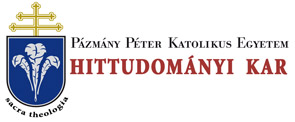Folia Theologica et Canonica 5. 27/19 (2016)
SACRA THEOLOGIA - Szabolcs Anzelm Szuromi, O.Praem., Cardinal Mindszenty and the Hungarian bishops against the communist dictatorship (1947-1974)
CARDINAL MINDSZENTY AND THE HUNGARIAN BISHOPS... 81 intend to let the communist regime’s intervention into internal ecclesiastical affairs/' Unfortunately, the transformation of the State Office of Ecclesiastical Affairs which became a chief-office of the Ministry of Culture and János Kádár’s move in form of proclamation on January 4lh 1957 had radically reorganized the political table in Hungary. IV. Epilogue There is always question about the so-called “Ostpolitik” of the Holy See (meaning the diplomatic activity of the Holy See regarding Central- and Eastern European countries), and about the diplomatic missions of Mons. Agostino Casaroli (cardinal since June 30"' 1979; secretary of state between July Is' 1979 and December T' 1990, f 1998). The Catholic Church’s catastrophic situation - like other denominations - in the communist countries, the interrupted diplomatic relations with the Holy See of these states, the limitless intervention into ecclesiastical affairs - without real international legal consequences - in these countries have created a completely new situation for the Holy See, which could be compared only - regarding some aspects - with the political and social circumstances of the French Revolution ( 1789— 1799)31 32 33 34 and the Napoleonic Era in Europe (1799-1815)”. However, the entire communist movement was much more complex regarding the institutionalized form of religious conviction and activity of the citizens than in any former historical period. Rightly indicates Achille Card. Silvestrini in 2000 about this extreme situation: “The Church could manage only emergency solutions which were limited (...), but we had to handle this very narrow elbow-room rather from constructive perspective, means, to appreciate those rights which could remain for the Church, those ruins which had been already not lost.”'4 We can understand this sentence and the activity of Mons. Casaroli in Hungary in 1963, if we consider two essential acts of 1957. The first was done by the Hungarian People’s Republic, when it regulated the filling of ecclesiastical offices by Order with Law Right 22/1957 on March 24"’ 1957, which was naturally canonically invalid. The second one was issued by the Holy See on June 16lh 1957 which prohibited for priests to play any political role, particularly to be member of the Hungarian 31 Salacz, G., A magyar katolikus egyház, tizenhét esztendeje (I94S-1964), München 1988. 148-149. 32 Cf. Kennedy, E., A Cultural History of the French Revolution, New Haven 1989. Doyle, W., The Oxford history of the French Revolution, Oxford 20027 33 Ardura. B. - Cholvy, G. - BillÉ, L-M., Le Concordat entre Pie VII et Bonaparte, Paris 2001. 34 Silvestrini, A., Introduzione, in Casaroli, A.. Il martirio della pazienza la Santa Sede e i paesi comunisti (I963-I9R9), Torino 2000. 27.
